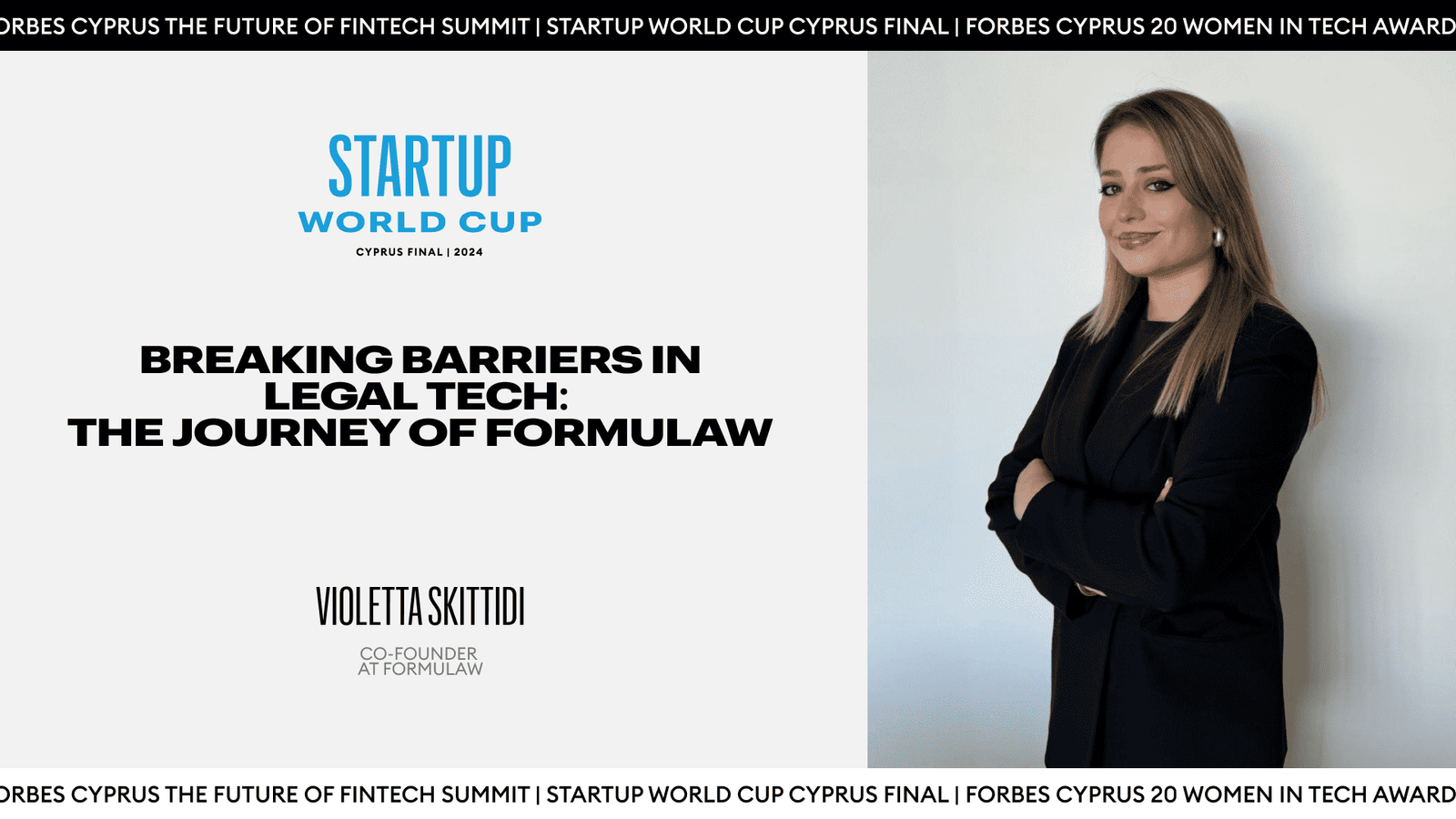Navigating the Future: CBDCs, Tokenization, and the Crypto Landscape
Cryptocurrency has come a long way in the last 15 years, constantly evolving and driven by introducing innovative products. As we navigate through a slight correction in the market, industry experts weigh in on the factors and catalysts that will shape the next hypercycle bull market. In an exclusive conversation with Anna Tutova (CEO, Coinstelegram), Dr. Andreas Vlachos (Blockchain & Cryptocurrency Strategist, ex. Binance), Dennis Diabler (CEO, Bitwala), Dr. Max Bernt (Chief Legal Officer, Blockpit), Jacob Kobler (Co-Founder and CEO, consola.finance), and Yael Tamar (Co-founder and CEO, SolidBlock), we explore the trends and dynamics that will define the crypto landscape in the coming year.
Evolution of Crypto: A Historical Perspective
Yael Tamar starts the discussion by emphasizing the evolution of the crypto space. In previous cycles, the market witnessed the rise of decentralized finance (DeFi), non-fungible tokens (NFTs), and the early stages of institutional adoption. According to Tamar, the current cycle is marked by the potential approval of the Bitcoin spot ETF by numerous US institutions. This institutional involvement, combined with the emergence of real-world asset tokenization, where traditional securities are integrated with blockchain technology, is expected to be a significant driving force.
Jacob Kobler adds a layer to this narrative by highlighting the complex interplay of factors influencing the next bull market. Regulatory developments, which can either hinder or catalyze innovation, take center stage. Kobler notes that despite a bear market, technological development has continued progressing, with teams focusing on building robust products. He also points to macroeconomic factors, such as unprecedented interest rates, introducing instability that can impact the trajectory of crypto.
The Role of Regulation in the Hypercycle
Dr. Max Bernt emphasizes the crucial role of regulation, disputing the notion that it kills crypto asset development. Instead, he suggests that it channels development in a regulated way. Unlike previous hypercycles driven by retail markets, the upcoming cycle is anticipated to be predominantly fueled by institutional involvement. Bernt stresses the importance of regulated assets, particularly Bitcoin, in ensuring the longevity and credibility of the crypto market.
Dennis Diabler provides a counterargument, expressing skepticism about attributing the next hypercycle to regulation. He argues that regulation often hinders adoption initially, and the recent excitement around Bitcoin ETFs results from regulatory approval, creating a loop of dependency. Diabler contends that true adoption will come from regions like Latin America, North Africa, and Southeast Asia, where crypto addresses real-world problems.
The Controversy of Bitcoin ETFs
The discussion takes an interesting turn when the topic shifts to Bitcoin ETFs. While there is consensus that the approval of Bitcoin ETFs could drive attention and institutional participation, Yael Tamar expresses an unpopular opinion. She likens the adoption of Bitcoin ETFs to a chicken walking into a KFC, suggesting that institutions are more interested in creating complex financial products for constant money transfers rather than genuinely embracing the decentralized nature of crypto.
Dennis Diabler joins in, stating that the excitement around Bitcoin ETFs is akin to a “cat chasing its tail.” He argues that the industry has been waiting for regulators to approve official Bitcoin ETFs when institutions could have purchased spot Bitcoin and kept it in self-custody.
The Quest for Real Use Cases
Dr. Max Bernt poses a thought-provoking question about the relevance of the current crypto market, challenging its utility for the average individual. He argues that the speculative nature of crypto assets, which often involves trading in circles and speculative altcoins, needs to provide a practical use case for mass adoption.
Dennis Diabler agrees, stating that the actual use case for crypto lies in regions facing economic challenges and currency devaluation. He highlights the need for crypto to safeguard against fiat instability, particularly in regions with ultra-inflationary currencies.
Looking Ahead: Tokenization of Real-World Assets
In conclusion, the panelists agree that tokenizing real-world assets is the next significant leap for crypto. While Bitcoin ETFs may drive short-term market excitement, the long-term growth and relevance of the crypto space hinge on bringing real assets onto the blockchain. This includes tokenizing real estate, digital identity solutions, and other tangible assets that can add value to the industry.
As the crypto community grapples with the complexities of regulation, the debate over Bitcoin ETFs, and the quest for actual use cases, the journey ahead promises challenges and opportunities. The convergence of institutional involvement, technological advancements, and a shift towards real-world asset tokenization will undoubtedly shape the trajectory of crypto in the coming year and beyond. Only time will tell where crypto goes next, but the insights from these industry leaders provide valuable perspectives on the evolving landscape.
Navigating the Future: CBDCs, Tokenization, and the Crypto Landscape
In the ever-evolving landscape of cryptocurrencies, industry experts are delving into the potential impact of Central Bank Digital Currencies (CBDCs) and the continued development of tokenization. Anna Tutova, CEO of Coinstelegram, leads a conversation with key players in the crypto space, including Yael Tamar (CEO, SolidBlock), Dr. Max Bernt (Chief Legal Officer, Blockpit), Jacob Kobler (Co-Founder and CEO, consola.finance), and Dr. Andreas Vlachos (Blockchain & Cryptocurrency Strategist, ex. Binance). Here, they share their insights on the future coexistence of CBDCs and existing cryptocurrencies, the implications of tokenization, and the challenges ahead.
The Potential Impact of CBDCs
Dr. Max Bernt’s concerns were raised about the potential misuse of CBDCs, citing instances where digital assets traded at a premium over their fiat counterparts. Jacob Kobler expresses apprehension about the downsides of CBDCs, pointing to the risk of increased government control, especially in regions like China, where smart contracts enforce stringent usage conditions. Yael Tamar adds her perspective, noting that CBDCs might shift user behavior as government-provided digital money could replace existing ecosystems and startups.
Dr. Andreas Vlachos emphasizes the need to distinguish between wholesale and retail CBDCs. While he sees potential benefits on a wholesale level, particularly in Intermarket transactions, he echoes concerns about how CBDCs might deviate from the decentralized principles that underlie the cryptocurrency space.
Tokenization: A Double-Edged Sword
The conversation seamlessly transitions to tokenization, with Anna Tutova questioning Yael Tamar about its development and potential impact on different industries. Yael breaks down tokenization as converting existing assets into digital tokens, emphasizing that it alone does not generate new liquidity. She cautions against viewing tokenization as a panacea, highlighting its dependence on the ability to sell these tokenized assets. Yael shares insights into her company’s pioneering work showcasing tokenization use cases, particularly in real estate.
Dr. Max Bernt voices his concerns about the rampant scams in the tokenization space, terming it a potential bubble. He emphasizes the importance of understanding the economic rationale behind tokenization and the misconception that owning a token equates to owning a real asset. Dr. Andreas Vlachos broadens the discussion, mentioning pilot runs in various industries beyond finance, such as land registries, digital art, and digital identities.
CBDCs vs. Cryptocurrencies: Coexistence or Competition?
As the dialogue shifts back to CBDCs, Anna Tutova raises the question of their coexistence with existing cryptocurrencies. Jacob Kobler foresees a forced mass adoption scenario where CBDCs could act as a gateway but notes the risks associated with increased government control. Yael Tamar predicts that digital currencies issued by governments might overshadow existing ecosystems and startups, funneling all transactions through government channels.
Dr. Andreas Vlachos distinguishes between retail and wholesale CBDCs, expressing skepticism about their ability to solve major issues the crypto community faces. Dr. Max Bernt shares his apprehensions, highlighting the challenges of balancing privacy and transparency on the blockchain.
Looking Ahead: Stablecoins and the Retail Market
In the concluding remarks, Dr. Max Bernt underscores the importance of stablecoins in retail, providing a potentially more scalable solution than CBDCs. The panelists collectively acknowledge the need for ongoing discussions, regulatory frameworks, and technological advancements to navigate the complex terrain of CBDCs, tokenization, and the broader crypto landscape.
As the crypto community grapples with these dynamic shifts, it remains to be seen how CBDCs and tokenization will shape the future of finance, influence user behavior, and impact the global adoption of cryptocurrencies. The insights these industry leaders share provide a valuable glimpse into the challenges and opportunities that lie ahead.





